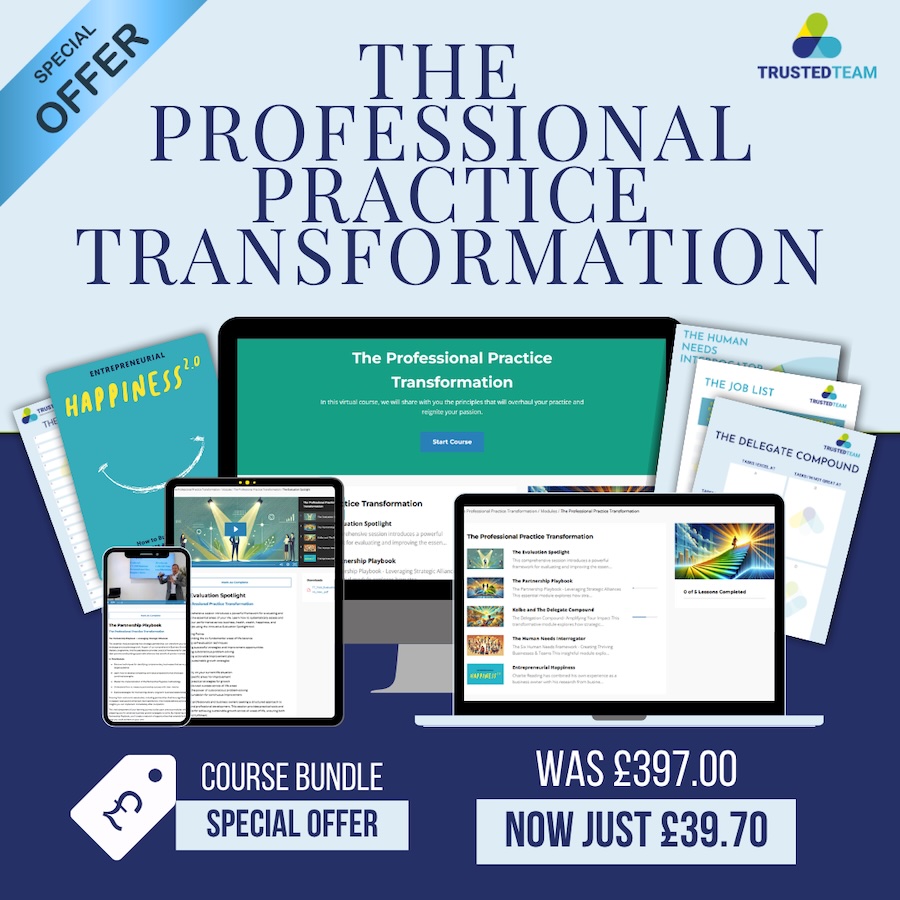Listen to the podcast summary here
In today's competitive business landscape, having the right team in place is often the difference between stagnation and exponential growth. Many business owners struggle with identifying talent gaps, determining who to hire next, and creating clear role definitions that align with both business objectives and individual strengths. This challenge becomes particularly acute when attempting to scale - the organizational structure that works for your current size likely won't support your business at three times the revenue.
Building a Leadership Framework for Growth
At a recent Kaizen meeting, we explored how to evolve from a lifestyle business to a leadership growth company with a solid team that could drive business forward whether the founder is present or not. The key is understanding that your organizational structure must evolve as you grow.
Learning from High-Performance Teams
High-performing teams in any field share certain characteristics that business leaders can learn from:
The Chicago Bulls under Phil Jackson exemplified how leveraging individual team players' strengths can lead to domination. Jackson's famous "triangle offense" system emphasized spacing, movement, and teamwork to maximize the talents of key players like Michael Jordan and Scottie Pippen.
Great Britain's gold medal-winning hockey team demonstrated the importance of finding specific talent for specific roles. They recruited Crista Cullen from retirement specifically for her unique physical attributes and skills, which ultimately contributed to their Olympic success despite her not being a regular goal scorer.
Rugby teams perfectly illustrate how diverse strengths create powerful team dynamics - from the raw power of props and hookers to the speed of wingers and the strategic thinking of scrum-halves. Each position requires different physical and mental attributes, yet they function as a cohesive unit.
The Organizational Framework
An effective organizational structure typically includes:
Visionary Founder: The idea generator who looks ahead and identifies opportunities
Integrator: The person who filters ideas and ensures implementation
Leadership Team: Five key roles covering:
- Sales
- Marketing
- Operations
- Finance
- Human Resources
While these roles exist in every business, in smaller companies, individuals often wear multiple hats. As you grow, these roles become increasingly specialized.
Using Psychometric Tools for Team Building
The Kolbe A Index measures cognitive strengths across four dimensions:
Fact Finder: How you gather and share information (from detailed researchers to big-picture thinkers)
Follow Through: Your approach to structure and completion (from systematic organizers to adaptive multitaskers)
Quick Start: Your relationship with risk and innovation (from experimental to stability-focused)
Implementer: How you handle tangible solutions (hands-on vs. conceptual thinking)
Understanding these patterns helps match people to roles where they'll naturally excel. For example, a financial advisor benefits from being a middle-range fact finder who can grasp complex details but explain them simply to clients.
Other Useful Tools
Print Profile: Explores unconscious motivations driving your Colby Index patterns
StrengthsFinder: Identifies your dominant talents among 39 strength themes
Grit Assessment: Measures perseverance and passion for long-term goals
The Recruitment Process
When building your team:
1. Create clear role definitions with ideal Kolbe profiles
2. Understand that the right time to hire is when you can fill approximately 50% of someone's time
3. Use a structured recruitment scorecard incorporating psychometric results
4. Consider candidates who might not obviously fit specific roles but demonstrate exceptional talent
5. For specialized roles like sales or AI development, focus on finding people with both skills and grit
Practical Next Steps
1. Have everyone on your current team complete the Colby A Index
2. Map these results to your organizational chart to identify strengths and gaps
3. Create a "3x growth" organizational chart to visualize future needs
4. Identify your most pressing talent gap (often sales or specialized technical roles)
5. Define the ideal profile for this position
6. Begin recruitment with clear understanding of what success looks like
Remember that finding great people is often harder than defining roles. When you encounter exceptional talent, consider creating opportunities for them to explore where they can add maximum value to your organization.
Building for Culture and Longevity
As you grow, maintaining culture becomes increasingly important. Consider tools like the Culture Cultivator to ensure your expanding team embodies your values and vision.
The journey from founder-centred organization to leadership growth company requires deliberate team building, strategic recruitment, and organizational self-awareness. With the right frameworks in place, you can build a team that not only supports your current business but drives its growth to new heights.



